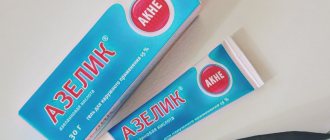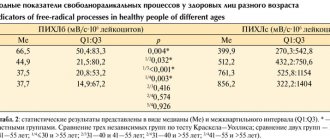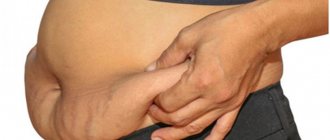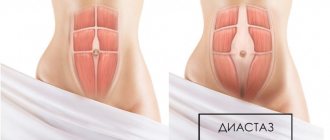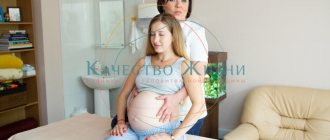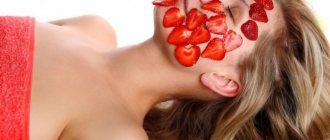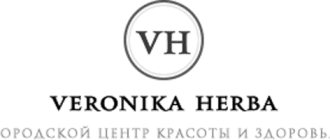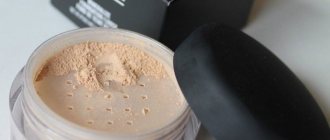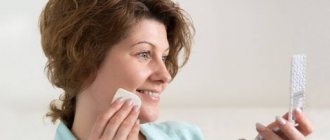When it comes to the uniqueness of each individual person, we mean not only the details of appearance, the originality of the pattern of lines on the palms, but also the characteristics of the skin. Did you know that the structure, color shade and phototype of the skin is unique? It depends on the combination of genes from both parents, as well as non-standard combinations formed when germ cells join. Human skin is determined by genetics, and will have its qualities throughout life, regardless of what external influence is exerted on the integument.
How to determine your phototype
It is quite easy to determine the phototype of your skin, using the generally accepted classification, which is a synthesis of the scales of two authors: one proposed by Fitzpatrick, and the second by Harold F. Lancer. There are six phototypes in total, the first four of which are characteristic of the population of Europe, as well as of Russia.
So, to determine which phototype your skin belongs to, we suggest answering a few questions:
- What color are your eyes?
- Light
- Blue, gray, green
- Dark
- Brown
- Black
- What is your skin color?
- Pink
- Pale
- Beige
- Brown
- Dark brown
- What kind of hair do you have?
- Ginger
- Blonde or light brown
- Chestnut or light brown
- Dark blond or brown
- Black
- Do you have freckles on your face and body?
- Quite a lot all over the body
- Small amount on face and body
- Very little on the face
- Virtually none
- Not at all
- What happens to your skin after prolonged exposure to the sun?
- Painful blisters and peeling skin
- Painless blisters and peeling skin
- Mild peeling, burning
- Unpleasant sensations are rare
- No burns and/or peeling
- How does your skin tan?
- Never tans
- In rare cases
- Sometimes
- Often
- Always
- How tan does your skin get?
- Doesn't become
- Slightly tanned
- Well tanned
- Very tanned
- Very dark
Skin phototypes according to Fitzpatrick
Dermatologist Thomas Fitzpatrick is called the father of modern dermatology. He was one of the first to study malignant melanoma and its dependence on ultraviolet radiation and sunburn of the skin. In 1975, a doctor developed a scale of skin types based on the level of sensitivity to ultraviolet light - what we call Fitzpatrick skin phototypes.
How many Fitzpatrick skin types are there and what are the features of each of them? There are 6 phototypes in total. Let's look at their detailed description from lightest (the skin produces little melanin) to darkest (high levels of melanin).
Celtic skin type
Skin: very light, milky white or pinkish beige with freckles.
Hair: very light or red.
Eyes: often blue, gray or green.
Location: Celtic (Scandinavian) skin type is found mainly among people from Great Britain and northern Europe.
Reaction to ultraviolet radiation: the skin does not tan, there is a high risk of sunburn and hyperpigmentation, there is a tendency to photoaging.
Recommendations: Avoid direct sunlight or use sunscreen with a high protection factor (SPF 50 or higher). When the sun is inactive (in winter or in cloudy weather) without adequate protection, it is permissible to stay in the air for up to 67 minutes, under the scorching sun - only 5-7 minutes.
Nordic skin type
Skin: light, sometimes freckled
Hair: light blond, blond, light brown.
Eyes: blue, gray, green.
Location: the Nordic phototype can often be found among the inhabitants of the central and northern parts of the European continent.
Reaction to ultraviolet radiation: the skin becomes slightly tanned, which fades quickly, there is a high risk of sunburn, and there is a tendency to photoaging.
Recommendations: sunscreen with SPF 30-50. Without SPF products, it is safe to stay in the inactive sun for up to 100 minutes, and in the active sun for up to 10 minutes.
Dark European skin type
Skin: darkish or ivory.
Hair: from dark blond to light or dark brown
Eyes: light brown, hazel
Location: the dark European type in some sources is called Central European, since the owners of this phototype live in the central part of the European continent.
Reaction to ultraviolet radiation: the skin is well covered with a lasting tan, the risk of sunburn is low, and there is a tendency to photoaging.
Recommendations: sunscreen with SPF 30. Without protection, it is safe to be under the inactive sun for no more than 200 minutes, with high solar activity - up to 20 minutes.
Mediterranean skin type
Skin: dark.
Hair: brown, dark brown.
Eyes: brown, black.
Location: owners of the Mediterranean phototype live in the south of Europe, Asia, South America and the Caucasus region.
Reaction to ultraviolet light: the skin tans very well, but is prone to photoaging, the risk of sunburn is minimal.
Recommendations: sunscreen with SPF 20-30. Without protection, you can stay under the inactive sun for up to 300 minutes, with active solar radiation - up to 30 minutes.
Indonesian skin type
Skin: yellowish, brown.
Hair: dark brown, black.
Eyes: brown or black.
Location: the Indonesian phototype is typical for residents of the south and east of the Asian continent.
Reaction to ultraviolet light: the skin tans easily, the risk of sunburn is extremely low, there is a tendency to photoaging.
Recommendations: sunscreen with SPF 10-20. It is safe to stay under the inactive sun for 400 minutes; during peak solar activity, it is better to reduce your exposure to direct rays to 40 minutes.
African American skin type
Skin: very dark.
Hair: dark brown, black.
Eyes: brown, black.
Location: African-American (African) skin phototype is typical for the population of Africa, America and the indigenous people of Australia.
Reaction to ultraviolet light: tanning matches the natural skin tone, the risk of sunburn tends to zero, photoaging is possible.
Recommendations: it is permissible to do without special sunscreens, provided that the exposure time is reasonable. When the sun is inactive, it is safe to stay outside for about 500 minutes, and with high solar activity - 50 minutes.
Phototypes: cheat sheet
| Skin type | Phototype | Ethnic scale |
| I | Prone to burns when tanning, does not acquire a bronze tint, and does not tan at all | Irish, Scots |
| II | Characterized by the occurrence of sunburn and the difficulty of obtaining a tan. Owners of this type of skin | central Europeans |
| III | It may succumb to the negative effects of the sun and become covered in blisters, but it is extremely rare. As a rule, the skin easily gets a golden tan, and after a while it becomes dark. | Italians, Portuguese |
| IV | Virtually no burns, quickly acquires an even, attractive tan | Natural olive or yellow skin tone (Hispanics, fair Hispanics) |
| V | It is distinguished by its natural dark complexion. Has a brown tint. Suitable for quick and easy tanning | Natural dark, brown skin (East Indian) |
| VI | Natural black leather | Naturally black leather |
Having correctly determined your phototype, you can more intelligently approach the choice of decorative cosmetics, as well as care products and protective products that protect the skin from burns. Also, having information about your phototype, you can avoid mistakes that arise when carrying out a number of procedures (laser rejuvenation, cosmetic procedures, etc.).
A professional cosmetologist at the Abrielle Aesthetic Surgery Clinic can choose the right skin care for your phototype. To schedule a consultation, call the clinic and 8(921)99-22-335.
35+ points
Skin type VI (“African”)
Dark brown or black leather. The sixth phototype is characteristic of people from the African continent and the aborigines of Australia. Natural skin protection against UV exposure can be considered ideal, since it allows you to constantly be exposed to direct rays of the sun without any damage.
If you score 13 points or less, you have fragile beauty and are at risk for developing melanoma. Things are a little better for the “European dark” (III) type. It is this phototype that predominates in Russia from Kaliningrad to Kamchatka. The incidence of skin cancer, scientifically called melanoma, has doubled in Russia over the past decades.
The incidence of skin cancer among representatives of phototypes IV, V and VI has not changed for decades. Among the indigenous population of Russia, these phototypes are rare. The number of mulattoes does not exceed 0.5% of the population of the Russian Federation, but we will also voice recommendations for them.
How to apply/use sun protection correctly?
Not everyone knows how to properly use sunscreen. Apply the product to dry skin in a thick layer 20-30 minutes before going outside. An average weight adult needs approximately 6 full teaspoons or 1 palm of sunscreen for the entire body. It is mandatory to use it every 2 hours, after each bathing and drying with a towel. How to apply sunscreen on your face? It should be applied to all exposed areas of the skin (including temples, ears). As for lips, there are special means of protection - sticks, balms.
How to apply sunscreen under makeup:
- After washing, you need to use a nourishing or moisturizing cream;
- Apply sunscreen;
- We use foundation and other makeup elements in the usual sequence.
Most manufacturers produce foundations with SPF. Under such tones there is no need to apply an additional layer of protective agent.
Cons of sunscreens
Products with physical filters are considered safe. But they also have some disadvantages: they dry out the skin, inhibit the normal renewal of the epidermis, can cause an exacerbation of acne, in high concentrations they create a white effect on the skin, they are dense, opaque, and quickly dissolve in water.
As for chemical filters, they can cause allergic reactions and cause the development of rosacea. The downside is that they are inherently a chemical reaction on the skin. As a result, body temperature rises. They begin to act only 20-30 minutes after application.
Additionally, in 2022, the FDA released the results of a study on chemical filters. It turned out that some of them penetrate the body, which can pose a potential threat to the body. These filters include avobenzone, oxybenzone, octocrylene, ecamsul.
At the ANACOSMA clinic, dermatologists will help you choose a safe SPF cream that will protect your skin as much as possible. In addition, you will be selected for an individual course of cosmetic procedures to prevent photoaging, for example, non-injection biorevitalization, injection biorevitalization, laser skin treatment, vitamin droppers, detox droppers, etc.
Application in cosmetology
In addition to the features of care and sun protection, phototypes are taken into account when using a variety of light cosmetology techniques, primarily laser. The action of pulsed light with a certain wavelength, that is, a laser, is used by cosmetologists for cleansing, lifting, and hair removal. Before using such techniques, the cosmetologist must take into account the skin phototype.
Incorrectly selected laser beam power can lead to burns.
How to avoid sunburn: tips for protecting your facial skin from ultraviolet radiation
To protect yourself as much as possible, you need to follow simple, quite accessible rules:
- Choose long, closed clothing with sleeves. Make sure that the material is natural, breathable, but quite dense.
- Avoid tanning during peak activity hours, which start around 10-11 and end at 16-17.
- When planning to swim, use only moisture-resistant products, which should be indicated in the instructions.
- Even if the skin is quite dark, use sun-reflective compounds, this is necessary.
The influence of sun rays
Almost everyone likes sunbathing, because it gives the surface of the dermis a beautiful, sometimes golden, and sometimes brownish-reddish tint, at the same time saturating the body with vitamin D, which is produced in the process.
Therefore, people happily expose their bodies to bright light, without worrying about their health at all. Meanwhile, danger is constantly present, and with the deterioration of the environmental situation and the expansion of ozone holes, this common practice is becoming increasingly dangerous. Few people think about how to protect themselves from sun rays until it is too late to take preventive measures. Therefore, it is worth clarifying the situation in advance and taking into account that ultraviolet radiation is the main enemy of healthy and young skin. Its impact can be fraught with various unpleasant consequences:
- Increased risk of developing cancer processes in the epidermis.
- Pigmentation disturbances, the appearance of spots.
- Photoaging, formation of wrinkles ahead of schedule.
- Loss of elasticity, smoothness, firmness.
- Overdrying, total lack of moisture.
The main problem is that all these negative manifestations are not immediately visible. The effect accumulates over years, decades, and each subsequent dose of radiation is added to the previous one, accumulating, which is fraught with a threat.
Under no circumstances should you leave your skin defenseless. It is unlikely that it will be possible to prevent the development of cancer, but it is quite possible to significantly reduce the risks.
What types of sun filters are used in cosmetics?
They contain physical or chemical ultraviolet filters, as well as their combinations, as in any sunscreen:
- a physical (or inorganic) filter reflects the rays and scatters them. This filter works against all types of radiation, is not absorbed by the skin and does not react with it. Effective even at low concentrations, non-toxic, does not decompose in light. Starts working immediately after application to the skin;
- a chemical (or organic) filter absorbs ultraviolet radiation and blocks its penetration into the skin. Does not enter the body, does not have any harmful effects on cells and the body as a whole. Waterproof, leaves no marks on the skin, colorless and odorless.
What substances are used in sunscreen cosmetics?
Zinc oxide and titanium dioxide are used as physical filters.
- Zinc oxide (ZnO) : blocks all types of ultraviolet rays. Leaves a less white residue compared to titanium dioxide. If the protective agent contains only this filter, then it should be at least 10%.
- Titanium dioxide (titanium dioxide, TiO2) : at a concentration of 2-25% reflects UVB and UVA2. If titanium dioxide is less than 2%, it only protects against UVB.
Chemical filters, due to their ability to break down in light, are often combined from several filters. There are a lot of them. The most modern are Mexoril and Tinosorb.
- Mexoryl SX, Mexoryl XL : SX absorbs the full spectrum of type A rays and is water soluble, while XL only absorbs UVA2 and is fat soluble. Maximum concentration 3%
- Tinosorb (Tinosorb S, M) : absorb and block all types of rays, help stabilize other filters, waterproof. Minimally penetrates the skin. Tinosorb M is less photostable. Maximum concentration 10%.
It is better to choose sunscreens that contain inorganic ultraviolet filters. They are safer.
Differences in male and female skin
Men and women have different skin, different problems associated with it, and, as a result, their care secrets are also different. And all this follows from biologically inherent differences in the structure of the skin.
Well, everyone has their secrets. In order to know how to preserve your beauty longer, let's consider a few key points.
Sensitivity
Even though men's skin is thicker than women's, it is more sensitive. This is directly related to the effects the skin undergoes. Environmental impact due to the specifics of the work (we are talking about professions that involve physical activity), shaving stubble - all this destroys the hydrolipid layer of the skin. But if we consider the vulnerability of the skin in terms of reaction to ultraviolet rays, then women's skin is more sensitive.
The structure of the skin largely depends on the activity of the sebaceous glands. In women's skin, estrogen is responsible for controlling them, and this causes less oil to be produced. Therefore, men's skin is naturally oilier.
Estrogen and collagen are responsible for the strength and elasticity of the skin. On average, skin thins by 1% over the course of a year. Due to the fact that after menopause, women undergo a complete restructuring of their bodies, they often look older than men. Moreover, the reaction to the sun's rays also increases with age, so protective measures should become stronger from year to year.
Upon reaching the age of 50, men have an increased risk of developing melanoma compared to women. This is primarily due to the rhythm of life - they spend more time outside, and their skin is more exposed to ultraviolet rays. This is also directly related to the fact that men use protective equipment much less often than women. Therefore, it is necessary to regularly visit a dermatologist and monitor any new growths that appear on the skin.
Cosmetics and procedures
Cosmetics created to combat the signs of skin aging are different for men and women because there are significant differences in the functional and chemical composition. Therefore, it is better not to use universal products, but to select them together with a specialist and based on your skin type and phototype.
There is no clear answer to the question of what ultraviolet rays bring more benefit or harm. Those who excessively sunbathe, especially at an advanced age, increase the risk of melanoma. But at the same time, a lack of sunny color can result in a low level of vitamin D in the body, which can lead to increased fatigue and even become a prerequisite for the formation of a depressive state. Moreover, then the consequences will be sad for both men and women.
The truth is that everything should be in moderation, within reasonable limits. If you exceed the norm for sun exposure or visit the solarium too often, you can get a burn, which can have serious consequences not only for the condition of the skin, but also for the entire body. But you shouldn’t avoid sunlight either, since nature itself has provided for everything.
Heliotherapy (sunlight treatment)
The mentality stipulates that women visit the solarium more often than men. And not the least role in this is played by the deep-rooted stereotype about the harmful effects of solarium on the body (men are not afraid of the risk associated with the release of adrenaline into the blood, but they are always very afraid of getting sick). Women, on the contrary, over the centuries have formed the habit of living according to the principle: “Beauty requires sacrifice” - this explains everything.
And despite all this, heliotherapy affects the body of men and women absolutely equally
Ultraviolet rays (whether live or artificial) provoke the production of melanin in the skin, which affects the change in skin tone. Moreover, even in terms of tanning intensity, there are virtually no differences between male and female skin, although the chemical composition is somewhat different
Be careful! Possible contraindications:
Prohibitions on visiting a solarium or the beach may be associated solely with the presence of some personal medical contraindications, but they do not depend on gender. For women, however, this list is still longer: in addition to dysfunction of the thyroid gland, this also includes cysts, polyps, fibroids and mastopathy.
What are the types of ultraviolet rays?
There are two types of ultraviolet rays that sunscreens protect against:
- UVB (ultraviolet rays type B): affect the surface of the skin, penetrating only into its top layer. These rays in small doses cause tanning, and in large doses - sunburn. Most modern filters protect against type B rays.
- UVA (ultraviolet A rays): divided into long (UVA1) and short (UVA2). They penetrate deep into the skin and damage collagen and elastin - premature aging of the skin occurs. They negatively affect the DNA of cells, causing mutations and contributing to the development of skin cancer. These rays do not cause a burn immediately, but their cumulative effect has a detrimental effect on the skin years after tanning. It is ultraviolet A rays that work in solariums.
How to protect yourself from ultraviolet radiation and save yourself from the sun
The connection between tanning and melanoma has already been proven by scientists; they are in close “tandem”. Modern equipment and innovative equipment make it possible to accurately measure the radiation intensity in each specific case, in any place and at any time. It is customary to focus on the ultraviolet index, which indicates its strength. The scale is designed to range from 1 to 11+.
The higher the digital data, the more severe the burns you can get, including damage to the skin and the formation of water blisters, which require long-term and difficult treatment. After repeated exposure to radiation, malignant tumors often develop. Therefore, it makes sense to think in a timely manner about how to properly take care of your dermis.
Cloth
First of all, clothing items provide skin protection from ultraviolet rays. However, you should not think that any thing can qualitatively protect the surface of the epidermis from contact with harmful radiation. When choosing, it is very important to pay attention not so much to the model, tailoring, color and other external signs, but to the materials, that is, the quality of the fabric, although the former is also important. It is worth listening to simple recommendations:
- Contrary to popular misconceptions, white things protect the body much worse than those colored with natural pigments. However, light-colored fabrics do not heat up as intensely in the sun, so they seem more pleasant to wear.
- You should not choose short shorts, open T-shirts and sundresses for walking on a hot day. It is recommended to choose the most closed models - shirts with sleeves, long trousers and skirts.
- It is advisable to give preference to clothing items made of thick fabric.
- On hot days, go outside wearing a headdress (scarf, hat, Panama hat) made of light-proof material.
You need to constantly keep in mind the fact that practically no fabric from which clothes are made hides the body from ultraviolet radiation one hundred percent. If you can see at least a slight glow in the light, it means that the radiation will reach the skin, albeit in a smaller amount. It is optimal to select items made from hemp, cotton or linen fabric.
Being in the shadows
Even while on vacation, for your own safety, it is worth limiting your time in the sun to the necessary minimum, especially during the hours of its greatest activity. Around the middle of the day, from 10-11 to 15-16, it is better to do something more useful, staying indoors or just under the shade of trees, away from the beach.
It is not difficult to understand more accurate time indicators if you know the basic rule. While the shadow from the body is shorter than the person’s height, it is undesirable to sunbathe, but if it has noticeably lengthened, then the intensity of the radiation has subsided. Just sitting under a canopy right next to the water is not the best idea, because more than 80% of the rays can be reflected by the sand and reach the surface of the skin without any problems.
Sunglasses
When hiding your dermis from harmful radiation, you must also remember about high-quality eye protection, since melanoma can develop in the organ of vision, and it happens no less often than usual. Therefore, you should try your best to reduce risks wherever possible. It is worth understanding that the accessory must contain real glass, and not just tinted plastic, which does not retain anything at all and does not protect from anything. It is best to purchase such items in branded, well-tested and well-known stores or optical shops.
But even quite expensive glass glasses do not guarantee 100% ultraviolet absorption; this indicator is usually indicated in the accompanying papers for a quality product. It’s good if 95-98% is delayed. The model should be taken with large glasses that hide as much of the face as possible, and not just the eyes.
Sunscreens
Modern industry offers a wide variety of products that can shield harmful rays. However, not all of them are equally effective. You should select only those options that indicate a protection factor (SPF) of 30 or more. Many people think that they only need to use a cream, serum or gel on the beach while tanning. In fact, in a city or in a forest, the impact of ultraviolet radiation is no less than on the sand near a river or sea.
It is important to apply the chosen products correctly; saving in such a matter is not at all productive. On vacation, it doesn’t hurt to lubricate your entire body, but in normal life, it’s enough to apply lotion to exposed areas (face, arms, legs, neck, ears). It is recommended to use approximately 2-3 milligrams of the composition per 1 square centimeter of surface. If you calculate on average, one procedure should take at least 28-35 milliliters.
Before use, be sure to read the instructions. Only there you can find instructions on how exactly, in what mode and with what frequency the composition is applied. It is believed that with constant exposure to the sun, treatment should be repeated at least once every 120 minutes. Not all such products have moisture-resistant properties, so it is recommended to additionally use them after swimming, especially in salty sea water. In addition, we must remember that actively sunbathing for more than 2 hours in a row is dangerous.
Fitzpatrick classification
There are many gradations and systems that define the so-called “skin passport”. One of the most convenient and widespread of them is the classification of the famous American dermatologist Thomas B. Fitzpatrick, developed in 1975. His scale divides all people into 6 categories depending on the saturation of the dermis with melanin and its reaction to the action of ultraviolet radiation. In addition to natural skin color, the Fitzpatrick phototype takes into account hair and eye color .
